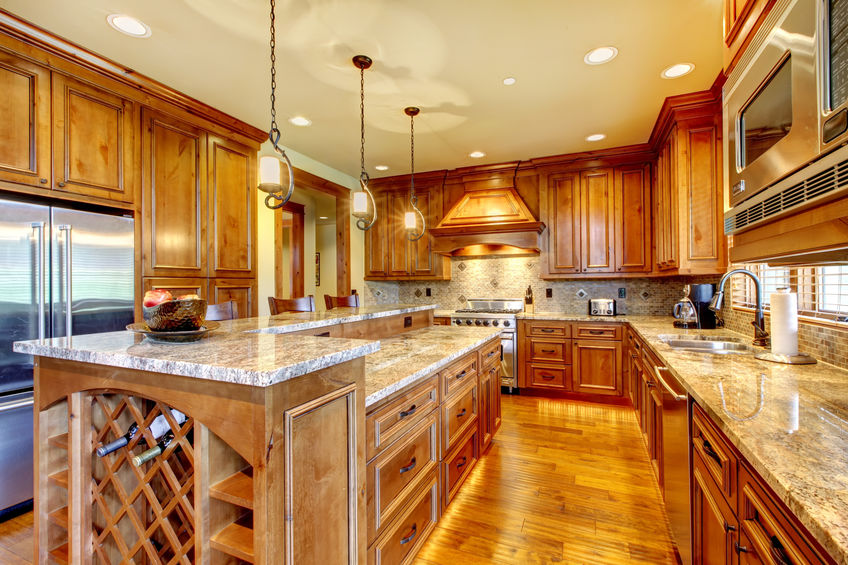What Causes a Stove Range Hood to Leak?
There are different reasons a stove range hood leaks fluid down onto your burners and stovetop. First, you have to ask: what the range hood is leaking?
The Range Hood Is Leaking Grease or Oil

Your filter is full – like most appliances that filter air, your stove range hood ventilates using one or a filter series to catch air pollutants. Over time, these filters will become clogged with oil and grease. When it will happen the range hood cannot do the job, so be sure to remove and clean the filter with a degreaser. If your range hood utilizes a cup or trap, the same applies.
Your range hood needs cleaning – Grease, dust, oil, and other gunk can build up inside of your stove range hood over time, and so you should make sure to open the cavity and give the entire system some TLC from time to time. Make sure to disconnect your stove from any electrical source before doing this, however, you do not want to risk a nasty electric shock.
Your fan is not working – This one is pretty clear. Needless to say, if an important component of your range hood is broken, your kitchen air is not getting ventilated. If you notice your vent fan spinning slow or not at all then that is an obvious issue. You can have a loose or broken fan belt, or you have put the filters in backward after cleaning them.
The Range Hood Is Leaking Water
You have a leak somewhere in your system Whether the pipes venting your range hood are not at the correct angle, you have got a leak somewhere in your shingles and roof, and the hood range has a leak somewhere, the issue is the same. This can be one of the hard issues to solve, and you will most probably want to call in an appliance expert who can precisely recognize the issue and offer a better solution.
The pipes are not insulted enough – One of the most common reasons a stove range hood leaking water is the lack of appropriate insulation. When there is cold, the hot air being vented can hit parts of the piping that are freezing cold, and forming into condensation.
How to fix condensation (how to stop condensation in a range hood vent)
It isn’t good to put exhaust ducts or range hoods vent through roofs because there will be condensations that can drip back inside. You should go through a side wall, or down and out the side of the basement. But if you must go up and through the roof, do not let the ducting have any loops in it they’ll gather condensation and mold in the lower spots.
You can stop condensation in a range hood vent by using insulated ducting, or wrap around ridged ducting with insulation. You should not lead the exhaust duct out through the soffit area because the hot air will rise and inside the attic, the warm air will rise back up. And do not jam the exhaust duct into a roof vent the vent hood will certainly fill up with condensation, which will drip back into the attic, or back down the exhaust duct. Instead, use special roof exhaust hoods that contain around collar the same size as your exhaust ducting, letting you fasten it to the hood solidly and airtight. Then select exhaust hoods that have internal drain paths that make sure condensation is channeled out onto the roof, not back into the attic.
The correctly installed range hood contains two metal dampers to stop outside air. One damper is present at the top of the hood, where it connects to the duct, and the other damper is at the wall where the duct exhausts its air. These thin flaps cannot make airtight seals because they open when the fan is working at low speed, but they will keep the cold drafts, the hot ones, from coming in.
So, the first order of business is to check the dampers and ensure they are operating appropriately. Begin with the outside cap. If there is a wall cap in the hood duct, then it should have a spring that will hold its damper shut when the fan is off. Also, you must see if the damper in the hood is bent or blocked. Do a similar thing with a roof cap, though it cannot need a spring because of its more horizontal orientation. In either case, if a cap is not closing the way it is supposed to, consider replacing it.
Now take a peek at the damper of the hood. That will include removing the section of the duct it is connected to. In several cases, you will find a butterfly damper, with 2 metal flaps pivoting on a horizontal bar. Though it is unlikely that there is a grease buildup on the flaps, the bar, or its housing, the hood grease screens hood will be capturing most of it give them a spritz of degreaser and remove them. Then turn the fan on/off to check that the damper opens freely and shuts.
Also, be sure no duct screws interfere with the movement of the flap. Installers can inadvertently plant some in the wrong spot. Again, if you find the damper damaged, then you should put a new one before reconnecting the duct to the hood. Your tweaked or new dampers should take care of your hood’s problem, and let you take down those boards.
